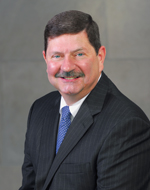When I was in high school in the late 1960s, my family listened to local news in a 30-minute broadcast that included the weather and sports. After that, we watched a 30-minute broadcast of The CBS Evening News with Walter Cronkite, where we learned about national and international events. We gathered around the television set each night at the same time to catch the broadcast, and since there was no rebroadcast, you simply saw it or you missed it. The networks delivered the news, and if they strayed from the news to deliver commentary, there was a warning at the bottom of the screen during the segment to inform us that we were hearing opinion and not fact. Newspapers delivered the news, in-depth analysis and opinions on an “editorial page.”
In the 1970s, there were three major networks: ABC, NBC, and CBS. The network newscasters and newspapers shaped the political news for the country. Television images moved a generation of people as never before. In 1971, the “Pentagon Papers” published by the
New York Times revealed embarrassing details about the conduct of the Vietnam War. By the mid-1970s, the country was captivated by the Watergate hearings and stunned by the resignation of President Nixon. Many people became disillusioned and distrustful of its government and we questioned how this could happen in a society with a free press. By the end of the decade, the country was ready for a new approach to news that only cable could provide—it was the start of a communications revolution.
Two significant challenges to broadcast news emerged in the late 1970s—CNN and C-SPAN. Technology certainly played a role in the communications revolution as the cable industry had recently entered the satellite era. There were only a few satellites in the sky and Ted Turner’s vision of a 24-hour news channel that would challenge the broadcasters seemed an impossible dream. When CNN launched in June 1980, you could now get up-to-date news 24/7. By the end of the 1980s, CNN had firmly established itself as a source of breaking news and the world became a much smaller place. Reporting on the activities of our government and events around the world established CNN as the world leader in news.
C-SPAN is simply cable’s gift to America. When Brian Lamb launched the Cable-Satellite Public Affairs Network in May 1979, millions of people would have the opportunity to see our government at work for the first time. We could now evaluate the words of our leaders directly instead of having them filtered through an intermediary. C-SPAN is a nonprofit corporation funded by the cable industry as a service to the American public, is available to over 100 million households and does not carry advertising. C-SPAN does not receive taxpayer or government dollars to support its programming. Recently, Brian Lamb reported that the cable industry has contributed $1 billion to C-SPAN over its 33-year existence. Its contribution to our democracy is immeasurable.
Today, the choices presented to the consumer for receiving information about the working of government is overwhelming. In addition to numerous cable networks with a wide variety of programs, we have seen the emergence of even more content though a broadband connection. Some have argued that cable has contributed to the polarization of the country that has resulted in gridlock and others speculate that we have a more open government that demands a higher standard than in the past. The debates will continue, but there is no doubt that cable changed the way we view the world.
(Larry Satkowiak is president and CEO of The Cable Center, the nonprofit educational arm of the cable industry. The Center preserves cable’s enduring contributions to society, strengthens relationships between cable and academia and unites the industry around the advancement of exceptional customer service. www.cablecenter.org)
